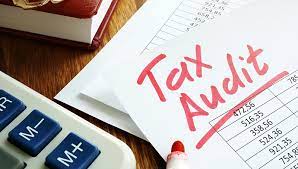The effective tax rate serves as a valuable tool for both tax planning and assessing one’s tax management proficiency. It is advisable to annually calculate your effective tax rate to make necessary adjustments to your withholding amount and effectively plan your budget for the upcoming year. If your tax preparer does not provide you with your effective tax rate, you can easily calculate it yourself. Please consult these blog post for additional information and instructions on calculating the tax rate and its constituent parts. It contains comprehensive guidance to assist you in obtaining the required information.
How to Calculate Tax Rate
The effective tax rate is the percentage of income that individuals or corporations are required to pay in taxes. The effective tax rate for individuals refers to the average tax rate applied to both earned income (e.g., wages) and unearned income (e.g., stock dividends). Generally, the effective tax rate for a corporation refers to the average rate at which its pre-tax profits are subjected to taxation, whereas the statutory tax rate represents the legally established percentage determined by law. Furthermore, the effective tax rate is also the amount of federal income tax that is due on an individual’s income, less any self-employment taxes, and local, state, and FICA taxes. Although it is possible to replace the effective tax rate with a measurement of a person’s marginal tax rate, the two are entirely unrelated. When comparing the taxes paid by various organizations or individuals, the effective tax rate is helpful.
The effective tax rate for corporations is determined by dividing the tax expense by the company’s earnings before tax. The effective tax rate for individuals is calculated by dividing their tax expenses by their taxable income. Form 1040 in the United States provides information on an individual’s “Total Tax” and “Taxable Income.” The form computes an individual’s total taxable income and provides an estimate of the amount of tax owed or refunded by the government. It is utilized to file individual federal income tax returns.
| For an Individual | ETR = Total Tax ÷ Taxable Income |
| For a Corporation | ETR = Total Tax ÷ Earnings Before Taxes |
The effective tax rate and marginal tax rate may differ due to varying tax rates applied to different income thresholds. Consequently, the effective tax rate provides a more precise measure of the total tax burden borne by an individual in a given year.
How to Calculate tax rate formula
Individuals can calculate their overall effective tax rate by dividing their total tax burden by their taxable income. This calculation helps compare the effective tax rates of different individuals or estimate the tax payments of an individual in high-tax versus low-tax states, which is a relevant factor for those contemplating retirement relocation. Below is a discussion of the formula to use when figuring out a corporation’s or an individual’s effective tax rate to comprehend the tax due.
For Individuals
The formula for Individual Effective Tax Rate: Total Tax Expense / Taxable Income
Corporations
Corporation effective tax rate formula: Total Tax Expense / EBT
Since EBT practically equals net income + total tax expense, the calculation above can be changed as follows:
Effective Tax rate Corporation = Total tax expense / (Net income + Total tax expense)
A step-by-step explanation that will help you understand how individuals and corporations with an effective tax rate determine their annual tax burden, which represents their tax planning.
- First, from the income tax return that was filed, figure up the person’s overall expenses.
- Next, figure out the person’s taxable income. You can calculate it by taking the individual’s total gross income and subtraction all exemptions and deductions from it. For example, taxable income equals gross total income less all exemptions plus all deductions.
- Finally, as demonstrated above, determine the person’s effective tax rate by dividing the total tax expense by the taxable income.
Steps to calculate a corporation’s formula:
Step 1: First, find the corporation’s total expense on its income statement, immediately above the net income.
Step 2: Calculate the corporation’s net income for the income statement. Total tax expense plus net income equals EBT. EBT = Net income + Taxes.
Step 3: Finally, divide the entire tax expense by EBT to calculate the corporation’s effective tax rate.
How to Calculate Tax Rates on Property
Taxes levied on the value of land, buildings, and other physical assets are known as property taxes. Real estate ad valorem taxes, of which there are many varieties, are the most common type of property tax. The owner of the property is responsible for paying this amount, which is determined by the municipality where the property is situated. The value of the land or other property possessed is the primary factor in determining the amount of tax due. Water and sewer upgrades, police and fire protection, schools and libraries, and new roads and highways are all possible thanks to the taxes collected by the city or town. Rates and categories of properties subject to taxation on real estate are not uniform across the country. It is crucial to carefully examine the relevant tax rules before making a property purchase.
When compared to income and value-added taxes, immovable property tax accounts for a very small share of federal revenue in most OECD countries. The valuation of the property is used to calculate property taxes. This refers to the property’s structures and surrounding land. Every one t,o five years, tax assessors will typically evaluate the property and charge the owner of the record the appropriate amount by the guidelines established by the taxing authority. Assessors determine that value by combining the assessed property value with the mill levy, as the millage tax. Mill levy is this overall rate. Every city, county, and school system can tax its properties. The required mill levy for each entity is first determined to reach the overall mill levy. The mill levy—one mill equals one-tenth of one cent—is the property tax rate. One mill costs $1 for every $1,000 assessed property value.
How to Calculate Tax Rates From Income Statement
The income statement has a particular structure. Right at the top, sales and revenue data are listed first, then additional sources of money. The complete income is not deducted from the expenses till after. In the end, the report shows the company’s net profit or loss. An income statement provides a summary of a company’s performance and profitability. By totaling income, expenses, gains, and losses, it determines the net profit after taxes. The purpose of this document is to identify potential areas for cost- and income control. Therefore, this information is essential for planning. Managers and executives make decisions to move organizations based on income statements since no one wants to work for a company that is always losing money. Similar to this, banks and lenders closely monitor financial records to prevent losses and loan defaults.
Simply dividing the income tax expense by the profits (or money earned) before taxes yields the effective tax rate. On an income statement, tax expense is typically the last line item before the bottom line or net income.
How to Calculate Tax Rate on Paycheck
Do you want to know how much taxes and other deductions will take out of your paycheck? If you work as an employee, your employer is typically required to deduct various taxes from your income, including federal tax withholdings, social security, and Medicare taxes. Additionally, you can choose to have voluntarily taken deductions from your pay, such as those for retirement, health care, or other costs. Your net salary is the sum remaining after these deductions.
An IRS Form W-4 must be completed when you begin new employment in order to specify how much federal income tax and other deductions will be taken out of your paychecks. Your employer will be able to determine the appropriate withholding based on the information you provide on your W-4, such as your tax filing status (such as single or married filing jointly) and the number of dependents. Correctly completing your W-4 form can prevent you from incurring a tax penalty if insufficient tax is withheld throughout the year. You can update your withholding at any time by giving your employer a new W-4 form. You might have additional withholding for the proper taxing authorities in your state or municipality if you have to pay state or local income taxes.
Here are some further hints for figuring out your tax rate:
- Keep all of your tax-related paperwork for at least seven years.
- You can ask the IRS for assistance if you have any queries about your tax return.
- A tax preparation firm or a volunteer tax preparer may be able to assist you with your taxes.
Additional Tips for Calculating Tax Rate
Get your tax records in order. All documentation evidencing your yearly earnings, such as your W-2 forms from your employer(s) and any 1099 forms you may have received.
Find out what your tax situation is. Your marital status and number of dependents will determine this.
Determine what tax bracket you fall into. Your filing status and taxable income will determine this.
Income tax must be determined. A person’s net income is their gross income minus all allowances and tax breaks.
Multiply your taxable income by your tax rate. Calculating your tax liability in this way.
Make sure you fork up your dues. You can submit your tax payment electronically, by mail, or in person.
What Do You Mean By Tax Rate?
The percentage of an income or sum of money that must be paid in taxes is known as the tax rate. These representatives favor lower capital gains tax rates.
How Do You Calculate a Tax Rate?
Simply dividing the income tax expense by the profits (or money earned) before taxes yields the effective tax rate. On an income statement, tax expense is typically the last line item before the bottom line or net income.
What Is the Federal Tax Rate?
There are now seven tax brackets in the United States, with rates ranging from 10% to 37%. Even if your salary puts you in the 37% tax bracket, that doesn’t mean the government gets to keep 37% of everything you make.
What Is the Tax Rate In USA 2023?
The same seven federal income tax brackets as the 2022–2023 tax year will apply to the 2023 tax year—the return you’ll file in 2024: 10%, 12%, 22%, 24%, 32%, 35%, and 37%. The tax bracket you are in depends on your filing status and taxable income, which includes wages.
How Much Is VAT?
On January 4, 2011, the standard rate of VAT increased from 17.5% to 20%. Postage stamps, financial transactions, and real estate transactions are some items that are not subject to VAT. The goods and services a firm offers determine the VAT rate it charges. Nigeria’s primary VAT rate is 7.5% (up from 5% as of February 1, 2020). Only a small subset of the supply is zero-rated, allowing the taxpayer to receive a refund of any incurred VAT.
How Many Percent Is VAT?
Most goods and services are subject to the standard rate. Multiply the initial price by 1.2 to determine the final cost at the normal rate of VAT (20%).
Is it VAT or VAT?
The Value Added Tax, also known as VAT, is a general consumption tax levied on the value added to products and services in the European Union. All products and services purchased and sold for use or consumption within the European Union are more or less covered by this regulation.
What Are the 3 Types of VAT?
Different kinds of VATs
1) VAT Intake Kind. A consumption tax obligation is a tax on the expenditures associated with using products and services.
(2) VAT Revenue Type. The income-kind VAT does not exclude materials or items purchased from other businesses from the tax base in the year of acquisition.
3) GNP Kind VAT.
Who Pays VAT?
Due to its inclusion in the price of goods and services, VAT is a tax on expenditure that is borne by the final consumer. The seller must include the VAT component separately and mention it on the tax invoice before collecting payment from the buyer and paying the government.
Who Charges VAT?
Contrary to sales tax, which is often only collected by the end seller (i.e., on the final sale), each seller adds the current-stage VAT to the cost of an item for the consumer. In the case of VAT, the ultimate seller will then charge the customer the full amount of tax.
Bottom Line
Divide the total tax by the taxable income to get the average tax rate. To calculate this for an individual, divide line 24 (total taxes paid) by line 15 (total taxable income). Utilizing the Internal Revenue Services’ (IRS) Form 1040, you can determine the average tax rate. Simply identify the total taxes on the form (line 24) and divide that sum by the entire taxable income (line 15). The average tax rate is equal to total taxes / total income.
Related Articles
- WHAT IS EFFECTIVE TAX RATE: Definition, How It Works & Calculated
- SELF-EMPLOYED INCOME TAX: Definition, Rate, How to Calculate & File for Return
- FICA TAXES: What It Is, Rate and How to Calculate It
- How to Calculate Annual Salary: Simple Steps.
- HOW TO CALCULATE INFLATION: Explained!
- NEW YORK SALES TAX: Tax Rate, Calculator & All You Should Know






